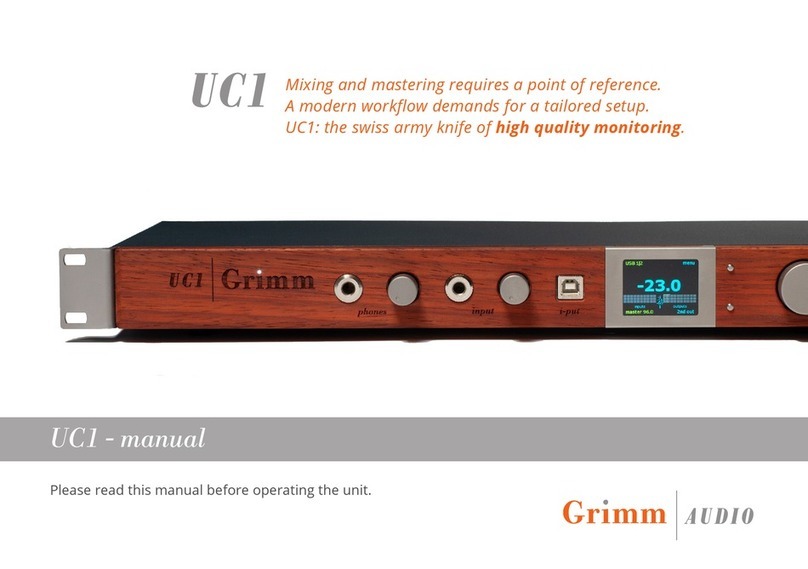
Quick Start Guide UC1-HiFi © Grimm Audio
4
A secondary loudspeaker system can connected to a
dedicated XLR output pair [ “2nd Out” ] that runs in parallel
to the Headphone output situated on the front panel.
Digital RJ45 Loudspeaker Connection :
This dedicated connection connects directly to a pair of
Grimm LS1 or PMC loudspeakers via their respective
inputs.
In the menu you select to which Output the Loudspeaker
system is connected. Although not typical in the Hi
Universe, please note that the UC1 oers several
interesting Pro Audio monitor settings such as “Mono”,
“Side”, and “Stereo Swap”.
PRE - Gain & Control Functions
Gain / Volume / Mute / Polarity & Settings :
As the UC1 is a Pro Audio component, Gain - which can be
increased or decreased via the volume dial knob - is
expressed in positive or negative “dB deviation” from a
reference loudness level nominally called “0dB”. This level
is by convention expressed in “db SPL”. This level
corresponds to an SPL of 79db in a small recording room.
To adjust the UC1 to the HiFi usage convention, reset the
default -8dB setting under the P2 function to -18db which
eectively equals an output level of 0VU. The DAC’s output
clips at +18db (5Vpp), so the gain would cover a range of
-18dB > +18dB.
Please note that the Volume and Mute functions are
available for all input / output signal paths, but in the
absence of a basic remote, these need to be adjusted
manually. News : A remote control 3.5 mm socket on the
back panel is for future use and is not yet enabled.
This is not really an issue as in almost all cases the UC1 as
a standalone DAC will be connected to modern HiFi
ampliers with “remote”. “Mute” is selected in “F1”.
The signal’s Polarity can be inverted in “P2”, but note that
this function is only available for Headphone Out signals
traversing the “Foldback Route”, which, if used, needs to
be activated in “F1”.
Furthermore, the ‘Foldback’ function is limited to two
output paths, notably to Headphone and 2nd Out .
(Continued)
1. Introduction





























